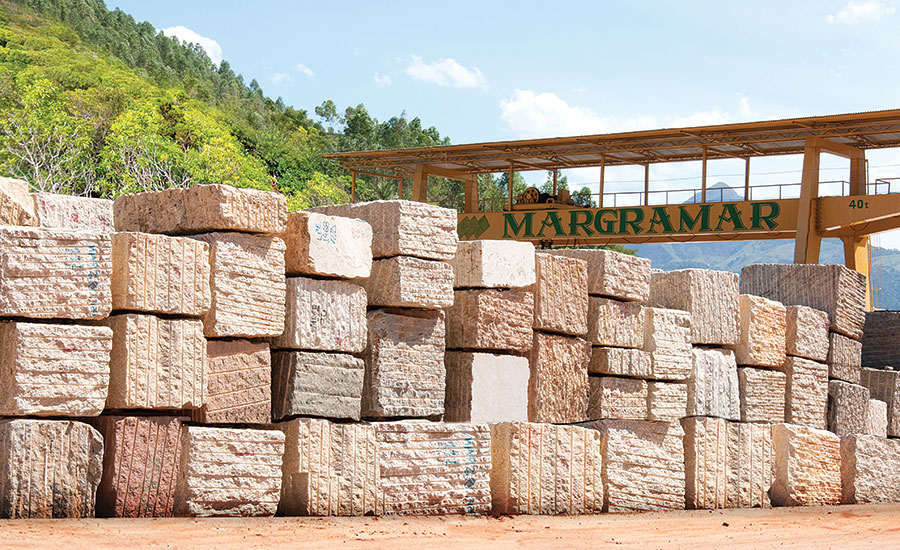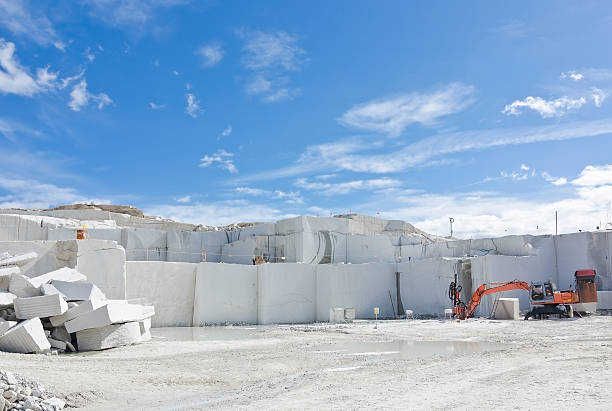Checking Out Granite Quarries in South Africa: A Comprehensive Guide
Wiki Article
Discovering the Rich History and Lasting Practices of Granite Quarrying
As we stand on the precipice of revealing the elaborate tapestry of granite quarrying, a trip through time exposes not simply the physical act of extracting rock but likewise the cultural and historic significance woven into the really fabric of this method. From the old beginnings that laid the foundation for contemporary quarrying strategies to the sustainable methods that are forming the future of this sector, each chisel mark on granite surfaces narrates waiting to be uncovered (granite quarries in south africa). The heritage of granite quarrying extends far beyond simple removal; it is a testament to human ingenuity, durability, and the long-lasting attraction of this stunning rockOld Beginnings of Granite Quarrying
Going back to ancient worlds, the method of quarrying granite has actually been an integral part of human history and architectural development. The earliest proof of granite quarrying days back to old Egypt, where substantial pyramids and intricate sculptures were crafted from this resilient stone. The Egyptians used primitive devices to draw out granite blocks from quarries, showcasing the relevance of this product in their huge building and constructions.Moving ahead in background, the Greeks also made substantial payments to the quarrying of granite. The Greeks made use of granite in various building wonders, such as holy places and statuaries, showing their ability in shaping and sculpting this sturdy rock. The Romans further refined the strategies of quarrying granite, using innovative devices like knives and hammers to essence and shape granite for their renowned structures.
Through the centuries, the technique of quarrying granite has actually progressed, with contemporary technologies enhancing efficiency while keeping the classic charm of this natural stone - granite quarries in south africa. From old human beings to modern home builders, the tradition of granite quarrying continues to form our globe
Development of Quarrying Techniques
The advancement of quarrying strategies has been marked by a continual development towards better effectiveness and precision in removing granite. From the primary approaches utilized by our ancestors to the innovative innovations utilized in modern quarrying operations, the sector has undertaken considerable developments. Early quarrying strategies included manual labor with fundamental tools such as blades, hammers, and wedges to extract granite blocks from the planet. As worlds proceeded, techniques like fire-setting and primitive nitroglycerins were introduced to promote the extraction procedure.In more recent times, the arrival of machinery changed the quarrying industry, allowing much faster extraction rates and raised productivity. Technologies such as diamond cord saws, high-pressure water jets, and pneumatically-driven drills have ended up being standard in modern quarries, enabling specific cutting and reduced waste. Developments in computer-controlled devices and 3D modeling have actually maximized quarrying procedures, leading to marginal environmental impact and improved sustainability practices. As the demand for granite continues to increase, the development of quarrying methods continues to be indispensable to check my reference conference sector requires successfully and sustainably.
Cultural Significance of Granite
Granite holds a profound social value throughout different people because of its enduring visibility in building masterpieces and admired monuments. From the majestic pyramids of Egypt to the intricate makings of the Angkor Wat holy place in Cambodia, granite has been a product of selection for revealing splendour and longevity in social heritage. In ancient Rome, granite columns adorned holy places and public buildings, symbolizing toughness and durability. The social importance of granite prolongs beyond its physical attributes; it personifies durability, stability, and eternity, making it a symbol of sustaining traditions and traditions.
Lasting Practices in Quarrying
Amidst the abundant history of granite quarrying and its cultural value lies a growing emphasis on lasting methods within the industry. As environmental recognition and problems regarding source exhaustion have enhanced internationally, the quarrying industry has actually progressively welcomed sustainable methods to lessen its impact on the setting and surrounding areas.
Furthermore, reclamation and rehabilitation of quarry websites post-extraction top article are indispensable to lasting techniques. By recovering quarried locations to an all-natural or advantageous state, such as producing wildlife habitats or recreational rooms, quarriers can counter the ecological footprint of their operations and contribute favorably to the local ecosystem.
Legacy of Granite Quarrying
With a historic background steeped in craftsmanship and commercial development, what withstanding impact has granite quarrying left on the landscape of modern culture? The tradition of granite quarrying transcends plain removal practices; it has formed architectural marvels, city landscapes, and cultural heritage worldwide. The resilient nature of granite has actually made it a favored choice for monoliths, structures, and infrastructure, standing as a testimony to the ability and artistry of quarry employees across generations.Moreover, the financial footprint of granite quarrying can not be overlooked. The market continues to give employment possibility and drive local economies in areas where granite extraction prevails. It has actually also stimulated technological advancements in quarrying methods and tools, leading to much more efficient and sustainable practices.
In terms of sustainability, the legacy of granite quarrying includes initiatives to alleviate environmental influences through reclamation tasks and liable source administration. By stabilizing economic rate of interests with environmental stewardship, the industry makes every effort to guarantee that future generations can continue to benefit from this long-lasting all-natural source.
Final Thought

Report this wiki page